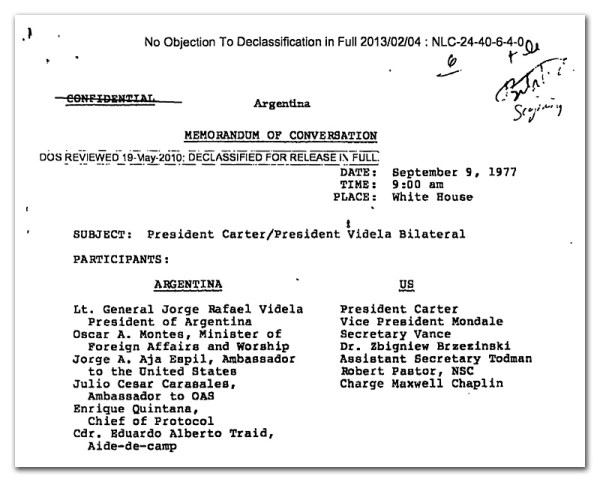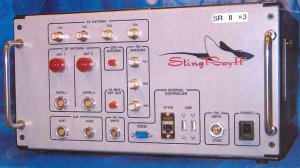Baltimore Police Use of StingRays Draws Ire, US Debated Secretly Storing Nukes in Iceland, and More: FRINFORMSUM 8/18/2016
Civil liberties groups are asking the Federal Communications Commission (FCC) to investigate the Baltimore Police Department’s use of cellphone tracking devices, commonly known as StingRays after the name of one popular model. The complaint comes “on the heels of a scathing Justice Department investigation that found that the police department routinely violated the civil rights of the city’s black residents,” and argues the use of StingRays continues in that vein, disproportionately targeting black residents. Steven Renderos from the Center for Media Justice notes that “The Baltimore Police Department uses cellphone interceptors at an astronomically higher rate than other law enforcement agencies, and mostly does so in black neighborhoods.”
The civil liberties groups argue that the Communications Act requires the Baltimore Police to obtain a license to operate the devices; an anonymous FCC official, on the other hand, said local law enforcement do not need a license, but could “not give a clear explanation of why a license is not needed.”
Last September the Justice Department required all federal law enforcement to obtain a warrant prior to using StingRay devices, but the directive does not apply to state and local law enforcement. In March of this year, however, “the Maryland Court of Special Appeals held that the Baltimore police must obtain a probable-cause warrant to use a cell site simulator and disclose the intended use to a judge.”
![From the original Air Force caption: "A view of the famous Terminal Hotel at Keflavik Airport, Iceland, is pictured here. In the foreground are two MATS [Military Air Transport Service] aircraft parked out front of the hotel." (National Archives, Still Pictures Branch, RG 342-B, box 1458, Foreign Locations—Iceland)](https://unredacted.com/wp-content/uploads/2016/08/3a-600.jpg?w=600&h=494)
From the original Air Force caption: “A view of the famous Terminal Hotel at Keflavik Airport, Iceland, is pictured here. In the foreground are two MATS [Military Air Transport Service] aircraft parked out front of the hotel.” (National Archives, Still Pictures Branch, RG 342-B, box 1458, Foreign Locations—Iceland)
Archival documents discovered by an Icelandic historian and published by the Archive also show that the United States had plans for at least one nuclear weapons storage site in Iceland if World War III were to break out.
A joint panel of Republicans on the House Armed Services, Intelligence and Appropriations committees have found that CENTCOM “regularly produced intelligence that distorted the results of the campaign against the Islamic State, suggesting that command leaders shaped analysis in a way that resulted in a more upbeat depiction of the war.” House Republicans began looking into the matter last summer after a civilian intelligence analyst complained that intelligence was being distorted. The Pentagon Inspector General is currently conducting a separate investigation into the matter.
Steve Aftergood reported this week on several noteworthy items, including highlighting the Defense Department’s publication of a new three volume manual that examines the “conditions under which U.S. military capabilities can be brought to bear in domestic civilian affairs.” Aftergood notes that “Except in cases of imminent loss of life or similar extremes, requests for military assistance are supposed to undergo a threshold review to establish their legality.”
Aftergood also posted the Defense Department’s Chemical and Biological Defense Program’s (CBPD) 2016 Annual Report to Congress, which he obtained through FOIA. Among the report’s highlights is the role CBDP funding provided in the Food and Drug Administration’s 2015 approval of a drug “to be used as a countermeasure against Yersinia pestis, the biological agent that causes bubonic plague.” The scope of CBDP’s research is expected to shrink, however, due to budget cuts.
Bowe Bergdahl’s lawyers have filed a complaint in his desertion case, saying that “the four-star general overseeing the soldier’s court-martial should be disqualified after he burned more than 100 letters related to the case.” The lawyers argue that on August 8 Gen. Robert B. Abrams told Bergdahl’s lawyers during an interview that he destroyed the documents, which “spanned the full spectrum of opinion” on Bergdah’s desertion. In their filing Bergdah’s lawyers say the damage is “irreparable” and insist that “The Army must find some other commander to ‘own and operate’ the military justice for this case.” A spokesperson for Forces Command gave no explanation why Gen. Abrams destroyed the documents and did not acknowledge the potential impact on the case, only saying that the defense’s filing was one of an “ongoing series of legal motions.”

First page from the Confidential September 9, 1977 White House document, “President Carter/President Videla Bilateral”
Last week the Archive posted a selection of eight key White House and State Department records from the Obama administration’s release of previously secret documents on Argentina during the period of its “dirty war.” President Barack Obama promised that several additional releases would be made in the coming months. Among the records are memoranda of conversation between Carter and Argentine junta leader General Jorge Videla, as well as materials revealing Carter’s personal intervention in obtaining the release of renowned newspaper publisher Jacobo Timerman. The documents also include new evidence about the consternation of U.S. officials at former Secretary of State Henry Kissinger’s efforts to challenge Carter’s human rights policy which, in essence, sought to repudiate Kissinger’s previous embrace of military dictatorships in Latin America and elsewhere.
This week’s #tbt pick is chosen with the 25th anniversary of the August Coup – the attempt to overthrow Soviet President Mikhail Gorbachev – in mind. This week’s #tbt pick is a 2015 posting on Perestroika in the Soviet Union, and includes a transcript of the First Extraordinary Session of the Supreme Soviet of the Russian Federation, August 21, 1991, which “brings the reader into the halls of the legendary Russian White House, to the extraordinary session of the Supreme Soviet of the Russian Federation at the exact moment of the triumph of the democratic resistance to the August coup. The discussions show the resoluteness of the democratic opposition and the decisive role of the Soviet army, of which key units ultimately disobeyed orders and sided with the democratic forces.”
Want to stay on top of the latest FOIA news? Click here to sign up for our weekly FRINFORMSUM email newsletter.
Happy FOIA-ing!


Comments are closed.